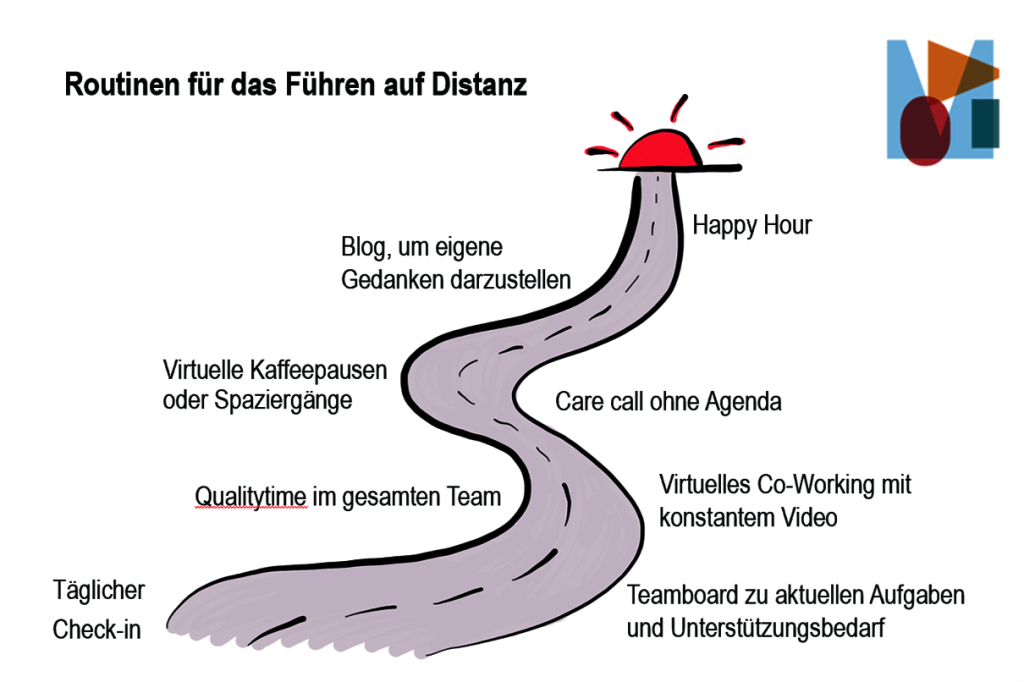In this respect, what we have all shaped as remote leadership in the new normality is based on our previous experiences in the context of leadership. Even before the pandemic, there were companies for which remote leadership was a conscious requirement for managers. They had the opportunity to familiarize themselves with this facet of leadership. With the start of the pandemic, remote leadership suddenly became an integral part of the leadership role in all organizations that were increasingly working from home. This requirement often caught managers unprepared.
In the early days, I discussed questions such as “How can performance be monitored remotely?” with many managers. In the meantime, this perspective has given way to the realization that, as long as the business model allows it, all organizations, from small companies to global corporations, can be managed virtually. What’s more, people are thinking about saving office space, halving the number of days spent on site and using this spatial change to initiate a fundamentally different form of collaboration and leadership. Collaboration platforms are gaining in importance and virtual meetings are often perceived as much more efficient than meetings in an on-site meeting room.
As with any change process, leadership and the respective understanding of leadership have a crucial role to play in making these developments successful in the long term. This is because interpersonal relationships are often lost when efficiency is increased. These bonds provide the necessary trust within teams and are what make an organization efficient in the first place. The conversations and contacts that usually provide the emotional glue in the organization in the hallway, in the kitchen or on the way to the bus stop no longer take place as a matter of course. Nobody sets up a virtual meeting with the title “Have you heard…”. But if trust is still the basis of collaboration and trust-building contacts no longer take place automatically, if meetings no longer start with small talk while waiting for the colleague who is always 5 minutes late, but instead everyone dials in on time and looks directly at the shared agenda slide, then the decisive task in remote leadership is to create space for interpersonal contact.
It is worth clarifying together with the team what intensity of communication is helpful for this and consciously planning time for personal exchanges.
The diagram shows examples of activities that contribute to more interpersonal relationships and thus create or maintain trust. This could be the introduction of a daily check-in, where each team member briefly posts what is on the agenda for the day so that others are aware and can provide support, or activities that do not have a fixed agenda but serve to maintain personal contact, e.g. quality time, joint coffee breaks or the care call. Topics can always be found. Starting with the question “How are you today?”, through “How are you experiencing our collaboration right now?” to “What’s on your mind personally right now?”. Or a private chat about family and weekend activities – many things can be discussed here.
Starting the weekend together with a virtual happy hour at the end of the week can also be an attractive team routine. Of course, there are also many other special activities that can take place virtually, e.g. virtual co-working, virtual wine tasting, virtual dinner, virtual team building with corresponding simulations or virtual fireside evenings.
In addition to clarifying communication routines within the team, common rules of cooperation also provide the necessary orientation. In which cases do we write emails, why do we use posts, why do we talk to each other by video or telephone? How do we document tasks, support requirements and progress in a way that is visible to everyone?







